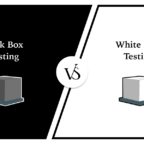Contrary to what you might suppose, the chance of businesses investing in digital metamorphosis moment isn’t much more advanced than it was before the epidemic. What’s the advanced moment, still, is the chance of businesses at more advanced stages of metamorphosis.
They’re using further data-producing tools, participating data with further end users, and making further combined efforts to govern data.
This raises numerous questions about the future of effective data operation and BI. Is the need for further tools endless? How can we insure the data they induce is continually integrated, participated, and interpreted rightly? How will we keep the data secure and clean?
Therefore, we are presenting to you 5 main big data trends that are expected to rule 2023.
Data-producing tools are becoming diverse however, the customer lifecycle of every tool becomes short
There’s no mistrustfulness presently that the number of SaaS tools available, as well as the volume of data they inclusively produce, will only continue to grow. Look at the size of the SaaS request — in 2023; it’s projected to be worth doubly what it was in 2019. Companies are espousing further and further tools time after time, and there’s no egregious end in sight.
But one not-so-egregious side effect of this is likely to be a shortening of the average client lifecycle of these tools.
Associations large and small waste millions of bones annually on tools that are infrequently used, if at all. They’re constantly trying out new bones while at the same time forgetting about others.
Also, numerous of these tools are espoused at the department, platoon, and hand situations, performing in large enterprises being ignorant of about half of their stationed SaaS tools and small enterprises being ignorant of about one-third.
To offset the pile-up of unused tools, we will see increased connection and purging by IT departments. This, together with increased relinquishment, will affect docked life cycles for utmost SaaS tools.
The exception will be tools essential to company structure, like CRMs and data integration tools.
Business Pros Turn Out To Be Data Literate & Low- to No-Code BI, and Data Integration tools Become the Norm
The chance of-technical professionals who fete the need to come data- expertise is high( 58 percent according to a 2022 check by Qlik), and the chance of decision-makers who anticipate them to be data- expertise is indeed advanced( 82 percent according to a 2022 check by Tableau via Forrester). still, they will have to develop capabilities that used to be the exclusive sphere of masterminds, If these professionals want to remain applicable on the job request.
Fortunately for them, the specialized knowledge needed to operate data tools( BI tools, data integration tools, and indeed some data warehouses) is getting lower and lower.
Gartner predicts that, by 2025, 70 percent of new operations developed by enterprises will calculate on low- and no-law technologies. Though the terms “low-law” and “no-law” are frequently used to describe development platforms, we will more and more see them used to describe BI and data integration platforms.
This trend, together with the drive for data knowledge within companies, will effectively discharge busywork from masterminds and empower-technical workers to make their data results.
Data security Becomes a Major Concern for Buyers
Decentralizing data capabilities is necessary for associations that want further analytics inflexibility at the functional position. But, with data breaches and other sequestration issues getting more and more common, it also exposes them to an advanced degree of threat. Therefore, there are numerous security testing companies to resolve this issue.
In Europe, data protection authorities constantly issue forfeitures for GDPR violations, with the stiffest forfeitures going to tech companies. So far in 2022, the loftiest forfeiture was€ 405 million( or$ 402 million), served to Instagram proprietor Meta Platforms Ireland Limited in September.
In the US, although there’s no civil data sequestration law, businesses still have state laws to worry about. And, of course, hackers. Just this time, Microsoft, Uber, Red Cross, and News Corp were all addressed.
SaaS buyers are noticing and will soon come much further conscious about what data they give to merchandisers. merchandisers will find it harder to close large deals without instruments like SOC 2. We at Dataddo can see this firsthand. Eventually, data security will antecede other buying criteria like stoner- benevolence, and price.
BI Tools Become Mobile-Friendly for Passive Use
It seems natural that BI would enter the mobile sphere.
Regular consumers of data, like marketers, salesmen, and upper operations, are more frequently demanding to pierce it when they aren’t in front of the computer. And professionals who don’t spend the maturity of their day in front of the computer, like storehouse staff and truck motorists, are beginning to need to pierce it more regularly
It’s thus not a surprise that the request value for mobile BI is anticipated to rise — from$ 10 billion in 2021 to around$55.5 a billion in 2030. nonetheless, these values are only a bit of the request value for BI as a whole, which is anticipated to rise from$35.2 billion in 2020 to$224.2 billion in 2028.
This supports the vaticination that mobile BI tools, no matter how advanced and streamlined they may come, will serve primarily to deliver perceptivity. For the product of perceptivity,e.g., via deep drill-downs and heavy dashboard customizations, the desktop interface will always be king.
Data quality Remains a challenge & AI Plays a Bigger part in Cleaning Data
For as long as people have been collecting data, data quality has been a challenge. But, with data moment coming from an adding number of distant sources and being handled by an adding number of line-of-business professionals, the cost of miscalculations being mushroomed to downstream systems is getting a lot more palpable.
In 2021, Gartner estimated that bad data costs associations a normal of$12.9 million annually.
Though data quality will noway be perfect, one thing that will greatly contribute to keeping it high will be the gradational perpetration of AI- grounded mechanisms in analytics and data integration tools. ( Dataddo, for illustration, is an integration tool with an AI anomaly sensor under the hood.)
These technologies will get better and better at flagging up outliers and keeping missing, incorrect, and lose data out of channels and dashboards.
It’s also important to note that since AI- grounded data quality results will always be most effective when assaying large datasets over longer ages, they should always be enforced alongside classic, people-focused results.



